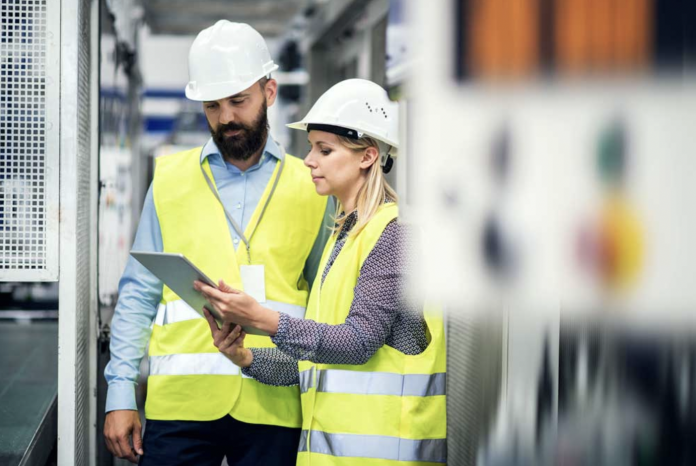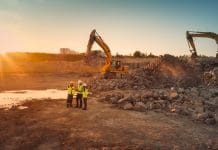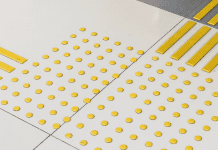Every company knows the importance of health and safety, but fewer companies understand the role of a Permit to Work system in achieving high safety standards
When we demonstrate ShireSystem’s Permit to Work module, we’re often asked why organisations use it and its key benefits.
With this in mind, we thought it would be helpful to explain the purpose of a Permit to Work system, answering questions such as:
- Why do companies use a Permit to Work system?
- Which tasks tend to cause the most accidents?
- What are the consequences of workplace injuries?
- How does a Permit to Work reduce accidents in the workplace?
What other benefits does a Permit to Work system deliver?
Why do companies use a Permit to Work system?
There are many reasons why companies use Permit to Work systems, but the main goal is to make their workplace safer.
Permit to Work systems supplement risk assessments and method statements, providing an additional safety layer for high-risk tasks. A Permit to Work will be issued by the project manager or supervisor, authorising specific people to carry out specific tasks, under strict controls and within a set time frame.
Some tasks naturally carry higher risks than others, which is why systems like Permit to Work exist. For example, extra precautions are needed during activities involving heights, confined spaces, chemicals and other volatile/flammable materials, and when using high-powered machinery.
To learn more about the Permit to Work process and use cases for Permits to Work, read our blog post on Everything You Need to Know About: Permit to Work.
Which work tasks cause the most accidents?
Without proper safety protocol, too many things could cause an accident at work. In the UK alone, nearly half a million people suffered work-related injuries during 2021.
Of the 441,000 non-fatal injuries sustained in 2021 (the most recent year that data is available), the most common accidents were:
- Slips, trips and falls on the same level (33% of all workplace injuries)
- Handling, lifting and carrying injuries (18%)
- Struck by a moving object (10%)
- Falls from a height (8%)
Sadly, 123 of the workplace accidents that occurred in 2021/22 were fatal. The industries worst affected by fatal injuries were construction, agricultural/forestry/fishing and manufacturing. Causes of death included falling from a height, being struck by a moving vehicle/object, and contact with moving machinery.
What are the consequences of workplace injuries?
Accidents at work are bad for a company’s resources, finances and reputation.
From a productivity perspective, workplace injuries take important people out of action – potentially for extended periods. For example, of the 441,000 non-fatal work injuries sustained in 2021, around a quarter (102,000) resulted in absences longer than seven days.
In fact, 36.8 million working days were lost in 2021/22 as a direct result of work-related ill health and non-fatal workplace injuries.
Economically, injured employees can cause financial constraints. Staff members need to be paid for sick leave, and many organisations recruit temporary staff to fill the gap. In the UK alone, workplace injuries and ill health cost businesses around £18 billion yearly.
The financial burden is further exacerbated if injured employees decide to seek compensation, and workplace accidents can also increase business insurance premiums.
From a reputational perspective, nobody wants to be known as an unsafe place to work. A poor safety reputation can impact customer revenue, recruitment levels and staff retention. In the era of digital news, people can share workplace accident stories widely online – and it can take companies years to replace negative search results with positive corporate news.
How does a Permit to Work reduce accidents in the workplace?
Clear communication is key to workplace safety. A Permit to Work defines the parameters for high-risk tasks, making it easier for nominated employees or contractors to carry out work safely.
The purpose of a Permit to Work system is to identify the major risks involved in a particular job and provide instructions for how those risks can be mitigated or minimised.
For example, if a project involves cutting, drilling, grinding and welding, the project manager can create a Hot Work Permit setting out a list of precautions, such as:
- Establishing a minimum distance between the person carrying out hot works and other people on-site
- Listing protective clothing and what fire-safe equipment must be used
- Mandating people carrying out hot works to observe the areas of a minimum period after the task is completed (e.g. 20 minutes) to check for hot spot residue, or that works must be completed a certain length of time before the end of a shift
Permit to Work software can enhance this process by enabling companies to create online templates for each type of high-risk task. These templates can be adapted for each job to make sure key safety points are consistently addressed and specific instructions are given, while minimising the time it takes to compile Permit to Work documentation.
Documents can also be shared easily with internal staff and external contractors if they are saved in a central online location. For example, ShireSystem, Elecosoft’s CMMS/CAFM solution, includes a Permit to Work module to integrate stringent safety protocols into routine maintenance tasks.
Read more: boosting workplace health and safety with a Permit to Work.
Does a Permit to Work system serve any other purpose?
The main purpose of a Permit to Work is to improve health and safety protocol, however, online Permit to Work software yields further business benefits. For example, it speeds up communication between project managers and those executing the work. It also reduces the number of questions employees or contractors may have about high-risk tasks, so they can get on with the job quicker.
Permit to Work systems also ensure that higher-risk tasks are always carried out by nominated people. This means the most experienced workers can take on specialist jobs, and companies can make sure all workers have the certifications needed to remain compliant with the execution of all tasks.
To learn more about the purpose of Permit to Work, book a free ShireSystem demo. You can also visit our Permit to Work page.

















